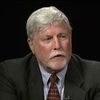If you have money tucked away in a mutual fund or a retirement account, you have the power to invest in the world's transition to clean energy. It's rather important that you do. With the leadership of the federal government in question again, grassroots action is more critical than ever.
All you have to do is take your money out of funds whose portfolios include companies that produce fossil fuels or burn a lot of them (coal-fired utilities, for example). There is a problem, however. Some funds that look clean on the surface have fossil fuels tucked within them.
Now there's a way to flush them all out.
By way of background, more than 50,000 people worldwide with assets of more than $5 billion have pledged to pull fossil fuels our of their portfolios and redirect the funds into the clean energy economy. Some are divesting for moral reasons and others because they know that keeping their money in fossil energy is very risky at a time that science says we should leave most coal, oil and natural gas in the ground. The 50,000 individuals have been joined by more than 600 institutions - faith groups, foundations, governments, colleges, pension funds, universities and others -- with assets of more than $3.4 trillion.
When the divested funds are reinvested in clean energy, they contribute to the global movement to exit the carbon era. Science tells us we should all be rushing to the exit doors. But divesting from carbon is only the first step in helping to decarbonize the economy. Shifting the United States and the rest of the world to clean energy requires capital.
According to Moody's, one of the world's leading credit-rating agencies, the commitment by the United States and more than 190 other countries to reduce their carbon pollution will "reshape the global financial landscape in terms of investment flows into clean energy". That flow needs to become a flood. Moody's estimates that as much as $114 trillion in finance will be needed over the next 12 years for the clean energy transition.
Where will all that capital come from? Governments, large investment funds, venture capitalists, risk investors and other public and private sources will contribute. But individual investors have to participate, too.
That brings us back to the carbon that may be hiding in your mutual fund or 401(k). One of the pioneers in the divest/reinvest movement is the nonprofit foundation As You Sow, which works with shareholders to improve corporate accountability. It has developed a tool that finds the carbon in thousands of the most common mutual funds and retirement plans. It does the detective work instantly and cost-free with up-to-date data.
Using 401(k) retirement plans as an example, As You Sow's explains "those funds can invest in a wide array of securities, and it's not always easy for investors to investigate what's inside the funds they own. You can spend hours poring over mutual fund prospectuses, and still not fully grasp everything your 401(k) is invested in. Your retirement money may be invested in economically and morally risky fossil fuel companies."
Whether it's moral reasons that motivate you to redirect your investments into clean energy or it's your aversion to the growing risks of investing in fossil fuels, this is a tool that will help you make sure you are not inadvertently contributing to the tragedy of unstoppable climate disruption.

